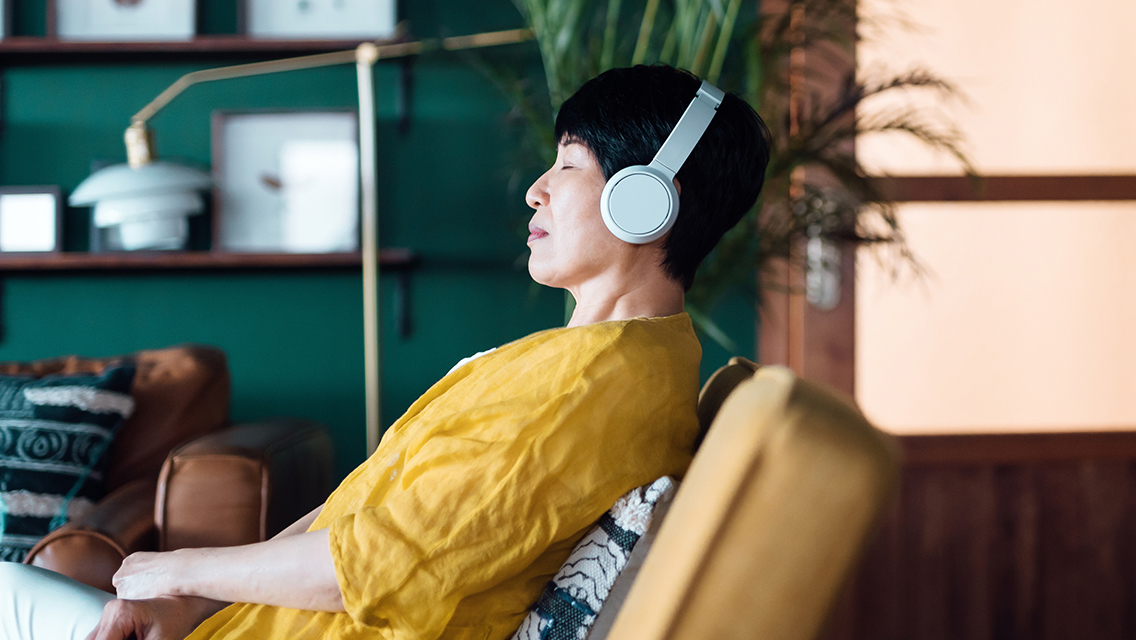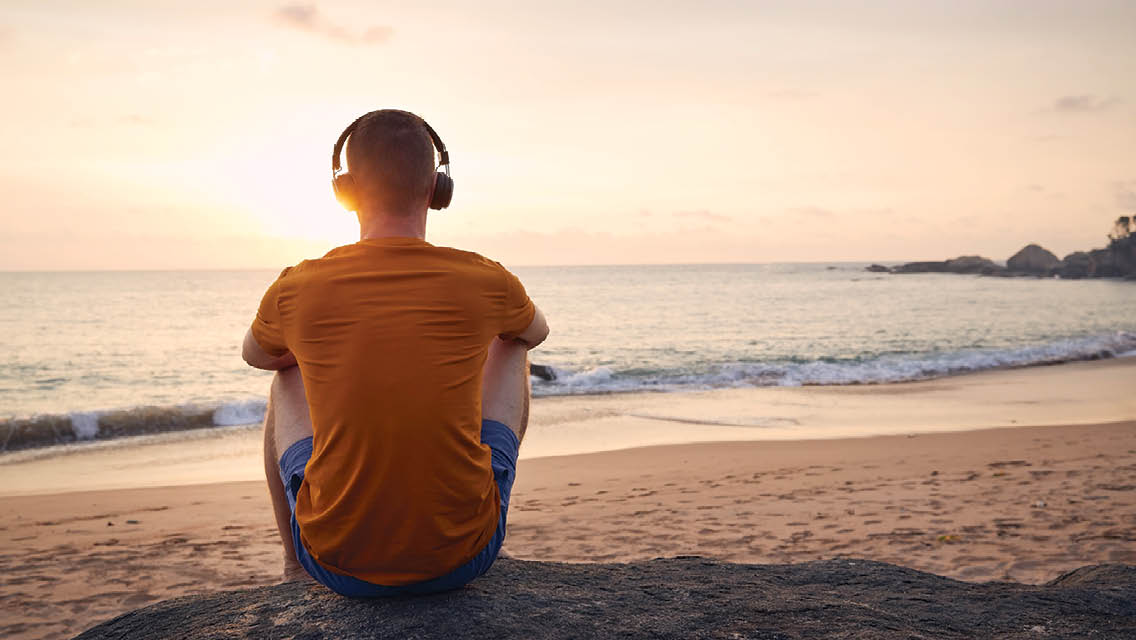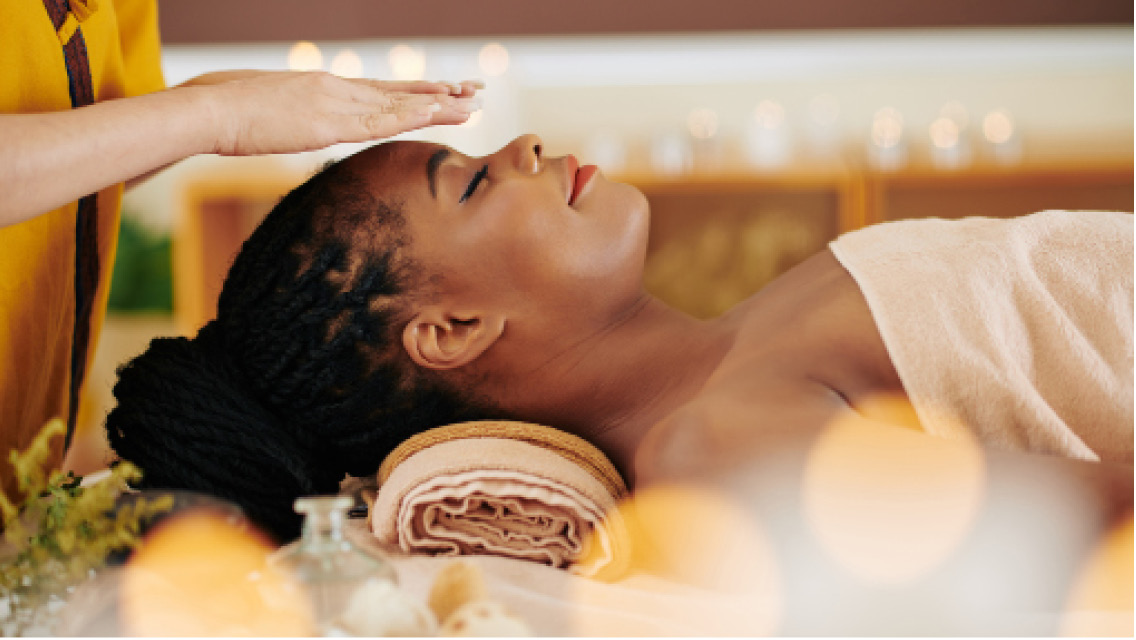Lemon Visualization:
Imagine a bright yellow, juicy lemon in your hand. Visualize the lemon until you can smell its clean tartness. Now imagine cutting a thick slice from the lemon — picture the edge of the knife breaking the skin, releasing a fine, fresh mist. Now, bite into the wedge of lemon…
Even if your lips haven’t puckered, it’s likely you can feel the saliva on your tongue, as if you’ve actually tasted the lemon. Surprised to discover how an imagined experience can directly influence a very real physiological response? You might also be surprised to learn that this connection between imagery and the body’s processes can become part of a balanced approach to health and wellness.
Using directed thoughts and images to elicit a desired physiological response in the body is called guided imagery. With the help of an instructor, or by using recordings or scripts, a person can use guided imagery to increase mental clarity, maintain health, or quicken recovery from illness or injury.
Much of guided imagery promotes and engages what psychologists call the “relaxation response” — the state of deep relaxation that slows your heart rate and breathing, and loosens your muscles, leaving you calm, focused and refreshed.
A Brain Divided
“In a real sense, we all have two brains,” writes Martin L. Rossman, MD, in Guided Imagery for Self-Healing: An Essential Resource for Anyone Seeking Wellness. “One thinks as we are accustomed to thinking, with words and logic. The other, however, thinks in terms of images and feelings.”
When we communicate consciously with our bodies, we typically use our verbal-logic language, which connects directly with the voluntary, or somatic, nervous system. So if you want to stand up, you think, “Stand up,” and your voluntary nervous system coordinates all the necessary muscles to do it.
Visual imagery, though, communicates with the involuntary, or autonomic, nervous system, which defines the physiological processes working outside of conscious awareness. The autonomic nervous system regulates breathing, heartbeat, immune and inflammatory responses, tissue regeneration and repair, digestion, and many other bodily functions essential to life.
These processes happen automatically, without our conscious awareness. But we can use directed images to influence (and change) the unconscious workings of our autonomic nervous system.
The Impact of Images
Our brains process thousands of images and thoughts a day, including feelings, tastes, sounds and smells. When the elements of imagery are positive, we’re likely to feel stable and healthy. But when these elements are negative, we can feel at risk. Our body’s response to the perceived danger may, over time, lead to illness.
“The most common form of imagery that affects our health is worry,” writes Rossman. When you worry, you focus on thoughts of danger, failure or pain. You might also remember old stress or grief. The imagined events may or may not actually come to pass. Yet while you’re worrying, your body is working overtime because it processes the imagined scenarios as if they were real.
Negative imagery, played out in worry and stress, triggers your fight-or-flight response. Your heart beats faster, pumping more blood to muscles that are already tensed, and your body releases adrenaline and other hormones, giving you a burst of energy. Meanwhile, your body also increases cortisol production, which suppresses your immune system.
While the fight-or-flight response is a natural protector against an immediate emergency or threat, it becomes unhealthy if activated over a long time, whether hours, days or weeks. By depressing your immune system and working your heart harder, chronic stress and worry leave you susceptible to illness.
According to psychotherapist Peggy Huddleston, the lead investigator for a study of the power of mind-body healing at a teaching hospital of Tufts and Harvard Medical School in Boston and the author of Prepare for Surgery, Heal Faster, it’s commonly estimated that as many as 85 percent of all medical problems are caused by stress.
The Power to Relax and Heal
Luckily, we can reclaim some control over our bodies, bypassing the automatic fight-or-flight response, by using guided imagery to reduce daily stress and worry. Positive images promote mental clarity and hasten healing, and they can help us relax our muscles, slow our breathing and lower our pulse rate.
“We have to learn the relaxation response,” says Linda Flies Carole, PsyD, an Edina, Minn.–based psychologist. Dr. Carole uses guided imagery to help her clients influence their physical and emotional health as a way of preventing illness, maintaining health, speeding recovery and enhancing performance. She describes the state of deep relaxation as “a place of power, the safest place you can imagine,” a place out of which an individual may work to achieve a specific goal — heal from an injury, quit smoking, prepare for an athletic event or simply maintain wellness.
Guided imagery even has powerful results for those suffering from severe medical conditions and those facing surgery. In a January 2006 study published in the Annals of Thoracic Surgery, Dr. Carole and her colleagues at Abbott Northwestern hospital in Minneapolis, Minn., noted that guided imagery significantly reduced postsurgery pain and tension when patients were treated before and after surgery. Guided imagery, she says, “gives the body a chance to rest. By imagining wellness, you move through it and beyond.” Someone with broken bones, for example, might imagine his bones being knit back together. A person with an acute, localized injury might imagine increased blood flow to that area of her body.
Already part of the fast-growing field of integrative medicine, where conventional medical care incorporates alternative treatments for a balanced approach to wellness, guided imagery may also be useful for anyone who feels stressed in our high-pressure, fast-paced world.
But, Dr. Carole cautions, it is just one part of an overall commitment to health and wellness: “For most people, guided imagery comes with the wellness package, which includes diet and bodywork. You weave this into daily life for a healthier mind and body.”
Rossman explains it this way: “Imagery allows you to communicate with your own silent mind in its native tongue. It is a rich, symbolic and highly personal language, and the more you observe and interact with your own image-making brain, the more quickly and effectively you will use it to improve your health.”
Time to Relax
Guided imagery works best when you can close your eyes and listen to another voice. Tapes and CDs, such as Self-Healing with Guided Imagery by Andrew Weil, MD, and Martin L. Rossman, MD, provide a series of sessions and exercises. The following script was adapted from a stress-buster exercise available at www.thehealingmind.org, a site that offers many similar resources.
Begin by getting comfortable where you are … take a couple of slow, deep breaths … when you breathe in, notice that you’re bringing in fresh air, oxygen and energy, which can help you fuel and recharge your body … and when you breathe out, let go of any unnecessary tension, discomfort or worry … give yourself permission to relax … as you relax, let your eyes close and begin to focus inside.
Imagine yourself in a place you love … somewhere beautiful, peaceful, comfortable and safe … somewhere you know or somewhere that comes to mind right now … somewhere that feels good for you to be in … imagine it is yours….
Notice the colors and sounds there … notice the air, the fragrances … notice the time of year or time of day … notice the temperature and how you’re dressed … this is a place where your body can relax and revitalize … take the time to enjoy it … if your mind wanders from time to time, focus on your breath and bring yourself back to your beautiful place … remember you can come back here whenever you like.
When you’re ready to return to the outer world, slowly let the images fade and go back inside … bring the feelings of safety, relaxation and revitalization with you … let yourself return energized and refreshed, ready to make the best of the day ahead.
To find guided imagery recordings and scripts, visit the following sites:




This Post Has 0 Comments